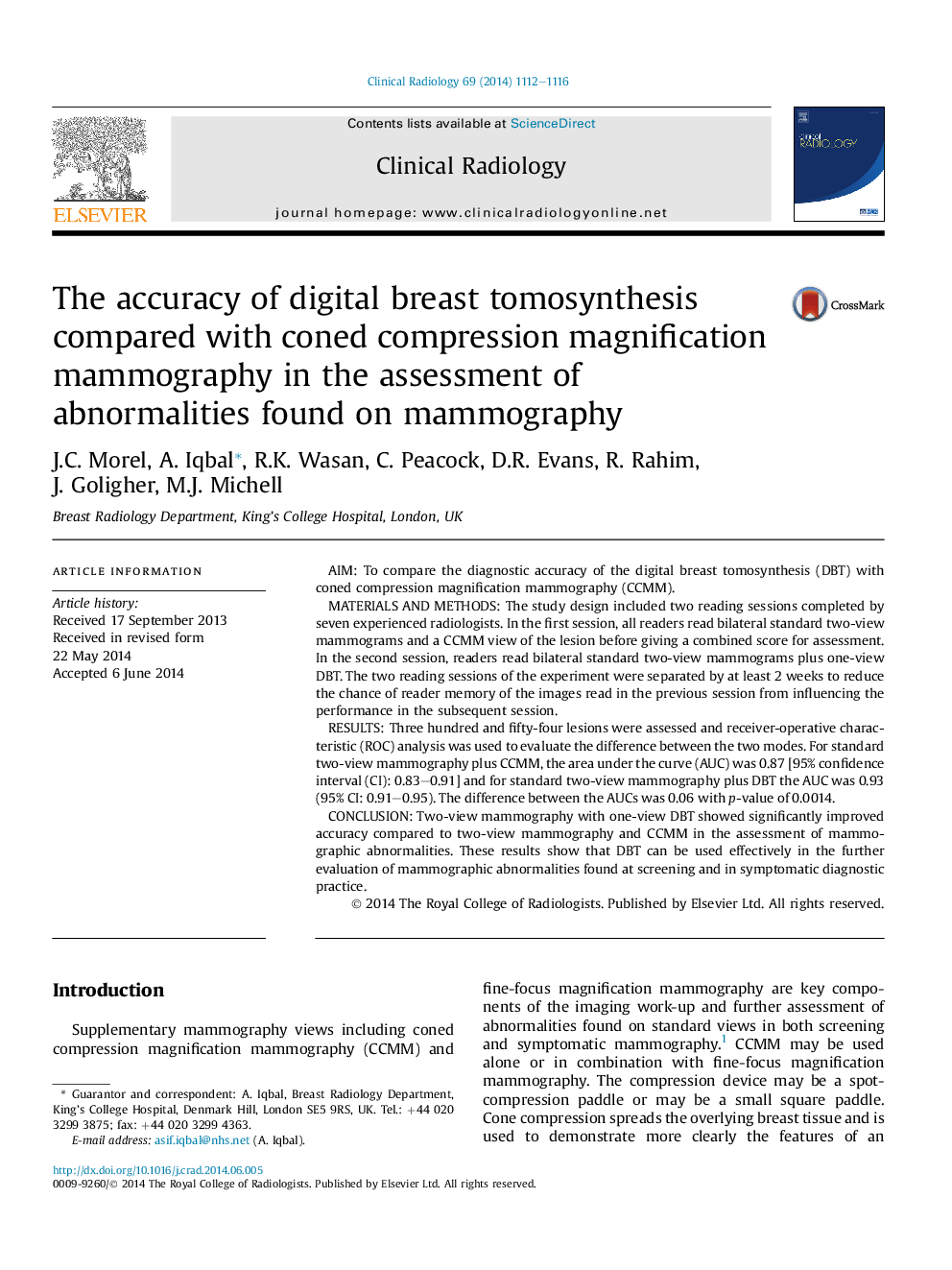| Article ID | Journal | Published Year | Pages | File Type |
|---|---|---|---|---|
| 3981555 | Clinical Radiology | 2014 | 5 Pages |
•Diagnostic accuracy of magnification mammography and digital breast tomosynthesis.•There is statistical difference between CCMM and DBT.•DBT has a role in evaluating mammographic abnormalities.
AimTo compare the diagnostic accuracy of the digital breast tomosynthesis (DBT) with coned compression magnification mammography (CCMM).Materials and methodsThe study design included two reading sessions completed by seven experienced radiologists. In the first session, all readers read bilateral standard two-view mammograms and a CCMM view of the lesion before giving a combined score for assessment. In the second session, readers read bilateral standard two-view mammograms plus one-view DBT. The two reading sessions of the experiment were separated by at least 2 weeks to reduce the chance of reader memory of the images read in the previous session from influencing the performance in the subsequent session.ResultsThree hundred and fifty-four lesions were assessed and receiver-operative characteristic (ROC) analysis was used to evaluate the difference between the two modes. For standard two-view mammography plus CCMM, the area under the curve (AUC) was 0.87 [95% confidence interval (CI): 0.83–0.91] and for standard two-view mammography plus DBT the AUC was 0.93 (95% CI: 0.91–0.95). The difference between the AUCs was 0.06 with p-value of 0.0014.ConclusionTwo-view mammography with one-view DBT showed significantly improved accuracy compared to two-view mammography and CCMM in the assessment of mammographic abnormalities. These results show that DBT can be used effectively in the further evaluation of mammographic abnormalities found at screening and in symptomatic diagnostic practice.
